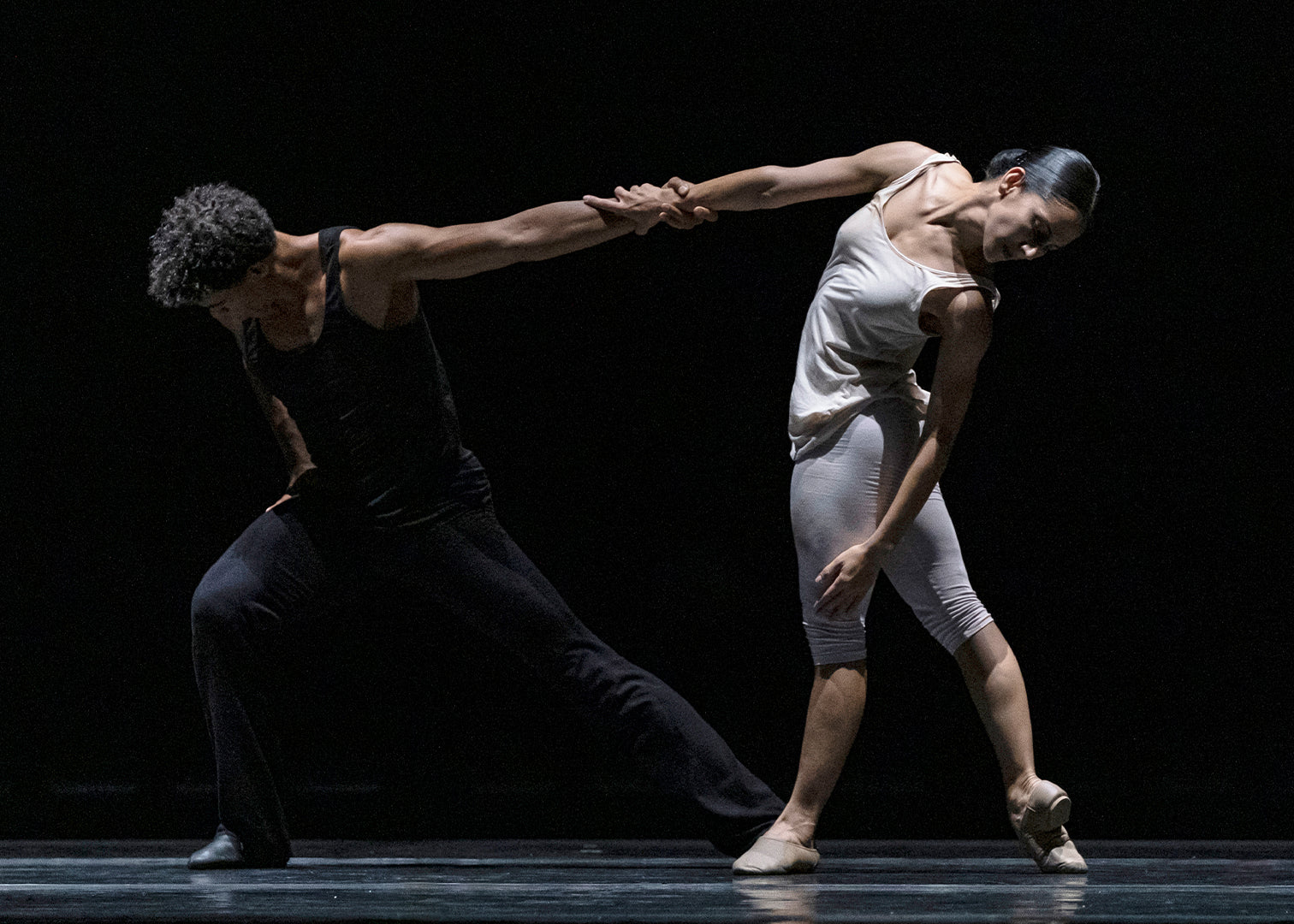The opening act, set upon the deck of the Royal yacht, the family clothed in white, is a bright, carefree scene. Pas de bourrés and small, skipping steps characterise the choreography as the Ramanov daughters, Olga, Tatania and Maria (Olivia Cowley, Beatriz Stix-Brunell and Yasmine Naghdi), flit across the stage in a trio of sisterly friendship. When Natalia Osipova enters she brings a light, joyful spirit to the stage, capturing perfectly Anastasia’s young and playful character. Considered the most free spirited of the daughters, Osipova is easily warmed to in this role. Olivia Cowley is also charming as Olga. Throughout, the production is danced and acted superbly by its cast.
The first act is a somewhat slow initiation into the story, MacMillan taking his time to introduce the family and the relationships between his characters. It's a slowness emphasised by a seeming penchant for threes: a number of trios, sequences of steps repeated three times. Yet despite the repetitive motifs of his choreography you sense that there is a purpose to this repetition, a reason as to why MacMillan is so intent on etching these phrases and images into your memory.
Of course, this is MacMillan and hints of darkness soon emerge. The youngest brother, Tsarevich Alexei's attack of illness (on this occasion danced with a fittingly boyish attitude by Rory Toms) suggests that all is not as perfect as it seems, while the watchful, ever-present figure of Rasputin creates an uncomfortable presence. In Thiago Soares’ portrayal it is difficult to determine whether he is a figure to be trusted.
This three-act ballet is a work of contrasts. While the opening has a lyrical feel to its movement the second act, to an extent, embodies the style of a classical ballet. A ball to celebrate Anastasia’s coming of age allows for a scene of grandeur. Low slung chandeliers light the stage. The corps, costumed in a rich colour palette of Russian folk-style evening dress, dance with a courtly air, their movement based upon lines and formations. There's a picturesque moment where they appear like Russian dolls, their line divided in four, brushing past each other in shuffling rotations.
Marianela Núñez makes her entrance here as the Tsar's favoured ballerina, Mathilde Kschessinska. Her presence allows for a more classical pas de deux, the strictness of the style at odds with MacMillan’s otherwise fluent choreography.
Yet in spite of the traditional setting, the scenery is more suggestive of a palatial street than a traditional ballroom, the grand chandeliers hung at a sweeping angle. It’s a displaced scene with an insecure grandeur, evoking the image of a class clinging to the remnants of a fading lifestyle.
Again, we witness MacMillan’s skill for painting relationships; his ability to craft a sense of the tensions that lie beneath the social façade. The happy relations of the opening now appear strained, Núñez’s presence awaking jealousy in the Tsarina, (danced by Christina Arestis), the inquisitive Osipova still youthful but more petulant. As Arestis switches between the Tsar and Rasputin in a pas de trois, the roles of husband and advisor become indistinguishable. Likewise, when she and the Tsar and Núñez and her partner (Federico Bonelli) dance together their partnerships repeatedly interchange, bringing a sense of past relationships and tensions to the surface.
Bob Crowley's set design, the stage sweeping upwards into the backdrop, creates an impression of a vast space. It lies in direct contrast to the scene of the revolutionaries that interrupts the second act. Squeezed in to the narrow gap in front of a curtain, the hunched, scurrying dancers are clothed in ragged grey costume—MacMillan need say little more about the difference in circumstance.
While MacMillan has deftly built an affinity with the Tsar’s family, here he arouses our sympathy towards the revolutionary crowd. Still, the inevitable end is nonetheless uncomfortable.
Against the traditional style of the first two acts, the modernity of the third is a nightmarish contrast. A hospital ward, the stage bare besides a bed; a group of nurses, Osipova dressed in a plain shift, her hair cropped short. There's an immediate sense of desolation.
The act's opening film footage provides an historical context with its disturbing images of mass graves and executions at the hands of a firing squad. Already the previous acts appear part of a distant past.
Osipova is convincingly tortured and vacant as Anna Anderson, the lady who believed herself to be the lost Anastasia. Her elegance exchanged for wildness, it's easy to imagine that she might have suffered the trauma Anastasia would have. The scenes of her supposed escape show her dragged and thrown between Rasputin and her husband (Edward Watson)—in her body there is no hint of the cheerful spirit of the previous acts.
At last MacMillan returns to those repetitive phrases of the opening. Here they recur as flashbacks of Anastasia’s past—happier times that make her current distress and darkness all the more poignant. In typical MacMillan style, you realise that even in the opening act his narrative had the closing moments in mind.
Rather than show the murder of the family, we see it through Anastasia’s memories—though her telling absence from these scenes determines that they cannot be memories at all, and so MacMillan deftly condenses his narrative while raising the debated question of Anna Anderson’s true identity. Yet Osipova’s love towards her family, the fleeting instances of happiness captured in these phrases, is no less touching. It’s easy to accept her as the lost Anastasia—even in this staged reality we question Anna Anderson's true identity.
The sense that this ballet could have been made today is striking. It may suffer from a lack of variation within its movement and the repetitiveness of its phrases, but it is meticulously structured. Despite the three contrasting acts and the historical context covered, a clear narrative thread runs through “Anastasia”—it is a true testament to Macmillan’s choreographic vision.









comments